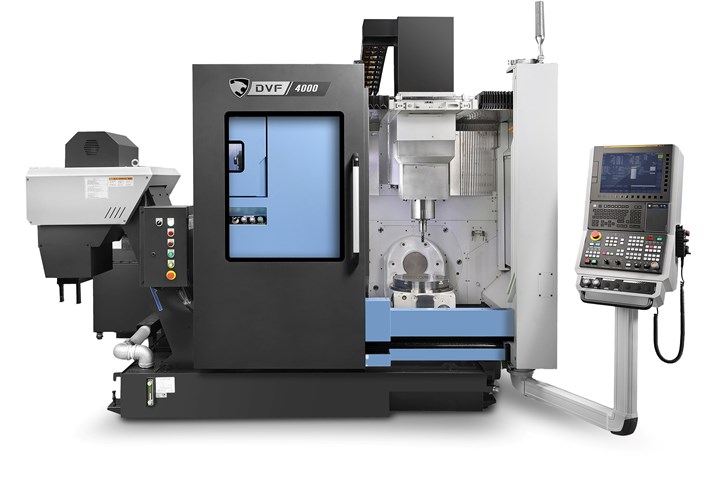Vertical Five-Axis Machining Center Tackles Parts With Multiple Operations, Setups
The DVF 4000 series presented by DN Solutions is built for the average moldmaker, featuring complete contouring capabilities and the ability to tackle complex parts that have varying profiles.
DN Solutions (formerly Doosan Machine Tools) introduces the DVF 4000, a smaller version of the company’s DVF family of vertical five-axis machining centers. The DVF Series is made up of compact five-axis CNC machines that are fully packaged to manage a customer’s diverse five-sided or simultaneous five-axis applications.
“The DVF 4000 is the perfect model for shops that want an integrated five-axis solution for virtually any part that has required multiple operations or setups in the past,” Andy McNamara, vice president of marketing and sales at DN Solutions America, says.
Moreover, compared to three-axis vertical mills, five-axis machining has become an ideal pathway for cutting mold cores and cavities, for its ability to get at more features, machine more aggressively and eliminate post-machining work.
The DVF 4000 comes standard with a 15,000 r/min direct coupled spindle, powered by a 24.8-hp (18.5-kW) motor that generates 87.1 ft-lbs (118 Nm) of torque. A Fanuc 31i-B5 Plus control makes full five-axis simultaneous control possible, giving complete contouring capabilities. It features a 400-mm-diameter built-in rotary table with a zero-backlash roller gear cam design for optimal rigidity and speed. The rotary table is designed for ease of use and consummate work efficiency, minimizing interference as the part is machined. An eight- or 12-pallet auto work changer provides additional productivity by offering up pallets to feed the machine for unattended machining.
Each DVF Series machine comes equipped with a 40-tool servo-driven automatic tool changer, giving the customer more tooling to tackle complex parts that have varying profiles. For even more versatility, 60- and 120-tool magazines are also available. The oil-cooled spindle controls heat to minimize thermal issues. A Z-axis thermal compensation feature collects real-time data from six sensors throughout the machine to automatically calculate compensation.
Related Content
-
How to Produce More Accurate Molds and Reduce Rework
Patented micro-milling process for manufacturing steel plate flat and parallel helps mold builders shorten mold build times and increase accuracy.
-
Machining Center Spindles: What You Need to Know
Why and how to research spindle technology before purchasing a machining center.
-
Three Good Reasons to Switch from Three- to Five-Axis Machining in Moldmaking
Five-axis machining technology is a great tool in the moldmaker toolbox.
















.jpg;maxWidth=970;quality=90)